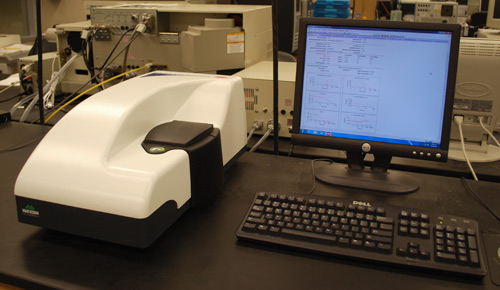
The light scattered from many samples appropriate for characterisation by DLS is well approximated by the Rayleigh scattering model where the scattered intensity, I, Eq. DLS also analyses a statistically superior number of particles in comparison to electron microscopy 10 and is able to detect a wider particle size range than nanoparticle tracking analysis, NTA 11, 12 resulting in numerous important applications, including those of contemporary note such as manufacturing, food 13, medicine 14, 15, environmental science and for screening and characterisation in biopharmaceutical development 16– 18. In most commercial DLS instruments, the sample is presented in a simple disposable cuvette, with measurement times of typically a few minutes in comparison to time consuming separation based techniques such as size exclusion chromatography (SEC) 8 and analytical ultra-centrifugation, (AUC) 9. ( c– e) Analysis process of a DLS measurement- Light scattering intensity ( c) showing a spike in the signal due to the appearance of an aggregate at t > 8 s, which can which can degrade the measured correlation function ( g 2-1) ( d) and the accuracy of the intensity weighted particle size distribution ( e). ( b) Replicate time averaged particle size distributions for a protein sample, showing the intermittent appearance of a large size component which also coincides with a perturbation to the position of the primary peak. ( a) Schematic of a typical DLS instrument, configured to detect backscattered light from the dispersed sample. 1a, with an illuminating laser and single-mode fibre detection path from the cuvette to the detector described by the q-vector, Whilst electron microscopy is limited in applicability to samples with an appropriate electron-scattering cross section 4, and requires the sample to be dried or more recently confined to a costly and specialised sample presentation system, DLS directly characterises particles in dispersion, and allows monitoring of dispersion effects such as the effect of salt or pH on colloidal stability the impact of thermal or chemical stresses on protein denaturation or the solvation of a nanoparticle 5– 7, as well as facilitating measurements of parameters such as aggregation temperature T agg and the diffusion interaction parameter k D, amongst others.Ī schematic of a typical DLS instrument is shown Fig. We demonstrate that this approach deals intrinsically and seamlessly with the transition from a stable dispersion to the partially- and fully-aggregated cases and results in an attendant improvement in DLS precision due to the shorter sub measurement length and the classification process used.ĭynamic Light Scattering (DLS) 1, 2, otherwise known as Photon Correlation Spectroscopy (PCS) or Quasi-Elastic Light Scattering (QELS), is a light scattering technique widely used to characterise nanoparticle systems 3 in dispersion, given its sensitivity to small and low scattering cross-section particles, relative ease of use and comparative low capital outlay. Crucially, all sub-measurements are reported, and no data are rejected, providing a precise and accurate measurement of both the steady state and transient size fractions.
DYNAMIC LIGHT SCATTERING CONTINUOUS SERIES
A revolutionary new approach to DLS measurement and data analysis is presented whereby the statistical variance of a series of individually analysed, extremely short sub-measurements is used to classify data as steady-state or transient.


This can make sample preparation iterative, challenging and time consuming and often requires the use of data filtering methods that leave an inaccurate estimate of the steady state size fraction and may provide no knowledge to the user of the presence of the transient fractions. The sixth power relationship between scattered intensity and particle radius is simultaneously a primary advantage whilst rendering the technique sensitive to unwanted size fractions from unclean lab-ware, dust and aggregated & dynamically aggregating sample, for example.

Dynamic Light Scattering (DLS) is a ubiquitous and non-invasive measurement for the characterization of nano- and micro-scale particles in dispersion.


 0 kommentar(er)
0 kommentar(er)
